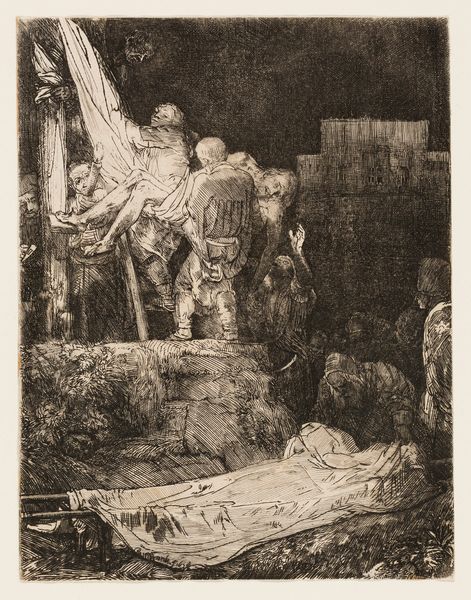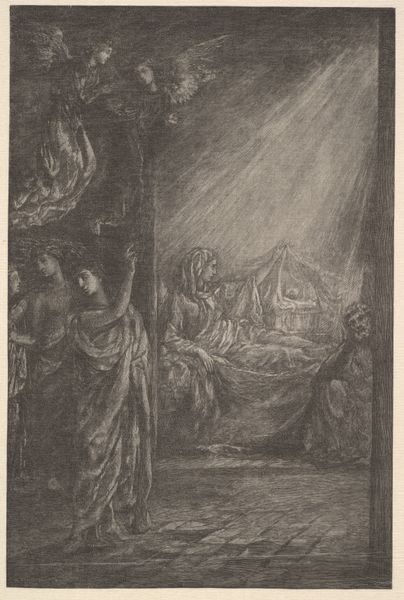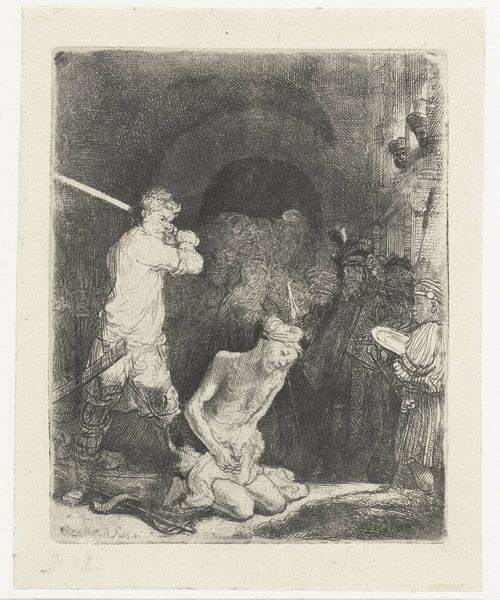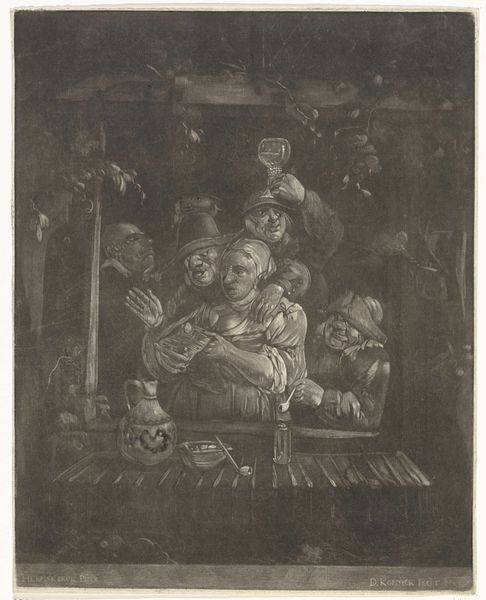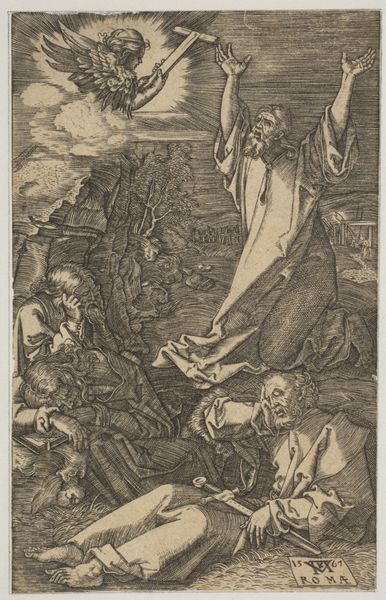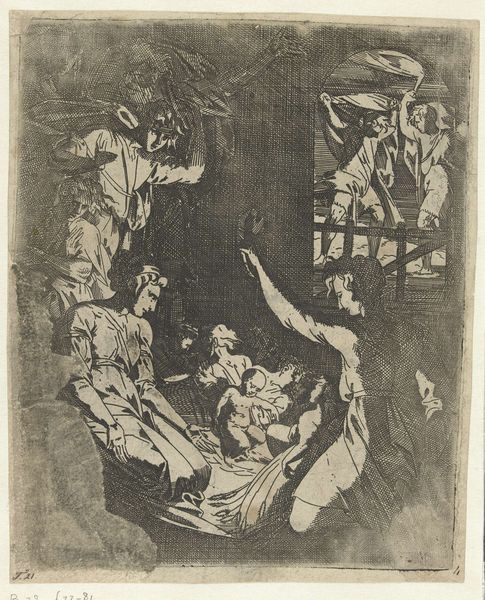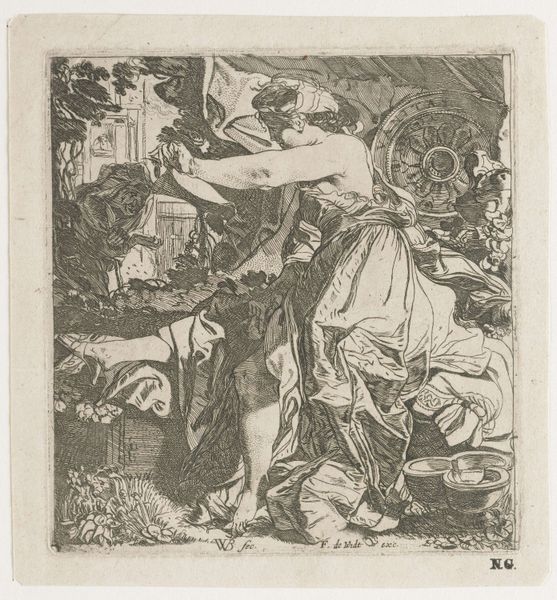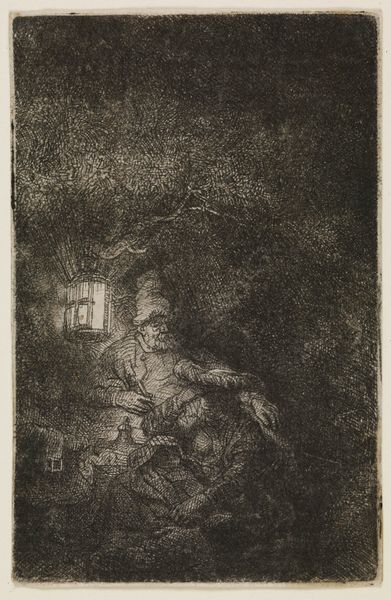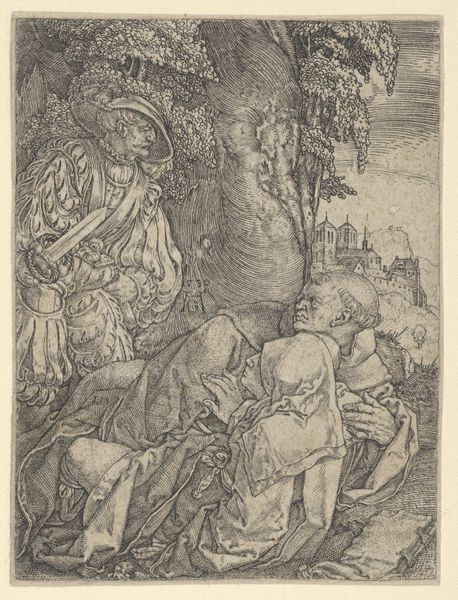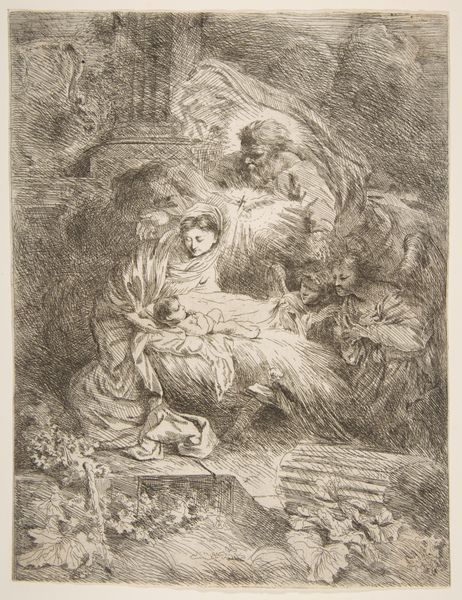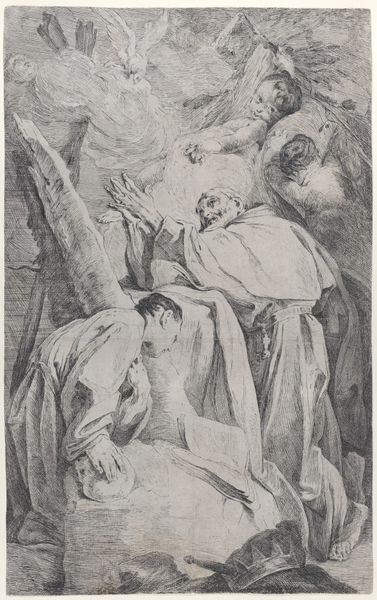
print, etching
#
narrative-art
#
baroque
# print
#
etching
#
figuration
#
chiaroscuro
#
history-painting
Dimensions: height 210 mm, width 161 mm
Copyright: Rijks Museum: Open Domain
Editor: We’re looking at "The Descent from the Cross by Torchlight" by Rembrandt van Rijn, made sometime between 1654 and 1808. It’s an etching, so a print. The composition feels chaotic but intensely emotional. How would you interpret Rembrandt's use of light and shadow in this work, and what's its impact on the viewer? Curator: This print is fascinating in its demonstration of how the narrative power of art can be democratized through reproducible media. Rembrandt's masterful use of chiaroscuro here isn’t merely aesthetic; it's a calculated theatrical technique. Think about it – the scene, Christ's removal from the cross, a moment of profound religious significance. But it's happening under the flickering, unstable light of torches. Editor: It does add to the drama. The light isolates the figures, making them more vulnerable. Curator: Exactly! This dramatic illumination creates a sense of immediacy. But consider further – the “stage” Rembrandt constructs with the strong light and shadow. The placement of figures is deliberate, meant to draw the viewer into this intensely personal moment. Do you think that, for Rembrandt and his audience, there may be an attempt to build religious and political sentiment, maybe for the establishment, maybe to reform it? Editor: That's a great point. I was just focusing on the religious narrative, but the act of distributing prints allows the story to be more broadly absorbed. It could certainly function as a subtle tool for social commentary, perhaps reflecting or even shaping public sentiment during his time. Curator: Precisely. Rembrandt gives us a potent intersection of art, faith, and societal forces through this print. Editor: Thinking about the socio-political context makes the artwork even more impactful! Thanks!
Comments
No comments
Be the first to comment and join the conversation on the ultimate creative platform.
